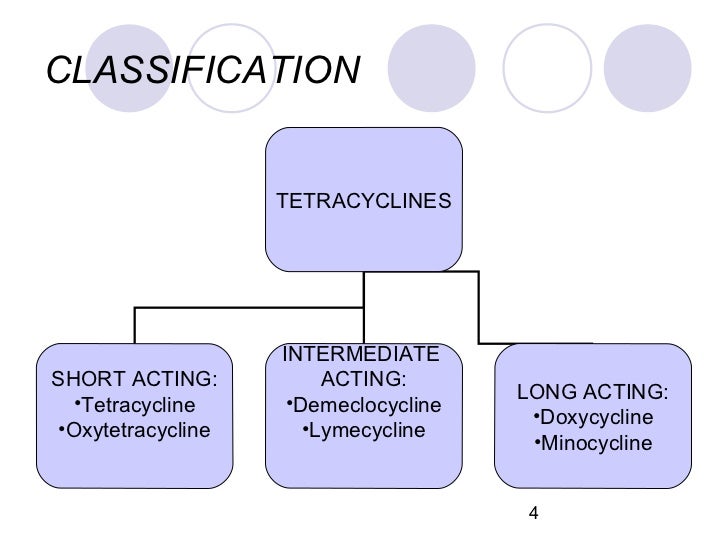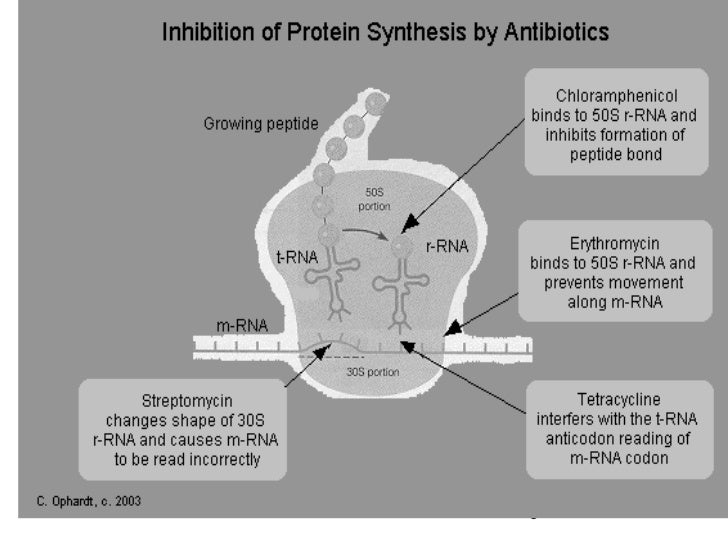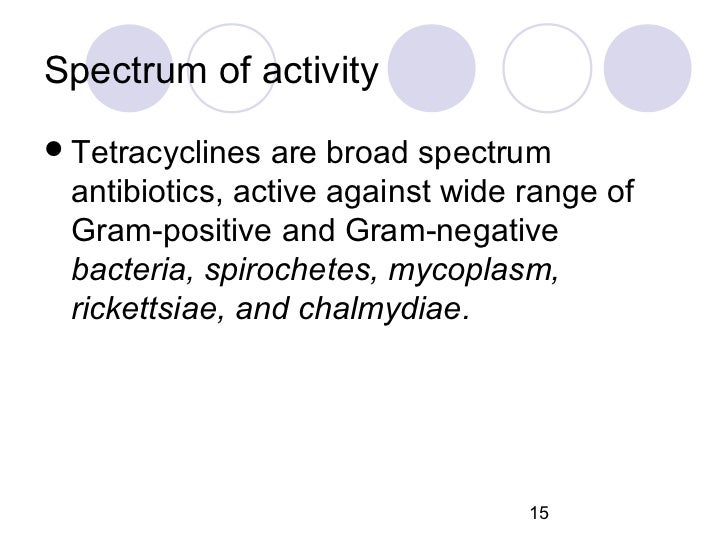Pharmacology Made Simple : Antibiotics : Tetracyclines
Join our facebook page for discussions and further good quality learning :
https://www.facebook.com/groups/405813783372378/
Tertracycline:
Tetracycline is in the tetracyclines family of medications.
It works by blocking the ability of bacteria to make proteins.
Tetracycline was originally made from bacteria of the
Streptomyces type.

Mechanism of action:
Tetracycline inhibits protein synthesis by blocking the
attachment of charged aminoacyl-tRNA to the A site on the ribosome.
Tetracycline binds to the 30S subunit of microbial ribosomes.
Thus, it prevents
introduction of new amino acids to the nascent peptide chain.
The action is usually inhibitory and reversible upon
withdrawal of the drug. Mammalian cells are less vulnerable to the effect of
tetracyclines, despite the fact that tetracycline binds to the small ribosomal
subunit of both prokaryotes and eukaryotes (30S and 40S, respectively).
This is
because bacteria actively pump tetracycline into their cytoplasm, even against
a concentration gradient, whereas mammalian cells do not. This accounts for the
relatively small off-site effect of tetracycline on human cells.




Clinical Uses :
Tetracycline is an antibiotic used to treat a number of
infections.
This includes acne, cholera, brucellosis, plague, malaria,
and syphilis.
It is taken by mouth.


Side Effects :
Common side effects include vomiting, diarrhea, rash, and
loss of appetite.
Other side effects include poor tooth development if used by
children less than eight years of age,
kidney problems, and sunburning easily.
Use during pregnancy may harm the baby.

Medical uses:
It is first-line therapy for Rocky Mountain spotted fever
(Rickettsia),
Lyme disease (B. burgdorferi),
Q fever (Coxiella), psittacosis, and
Mycoplasma pneumoniae and to eradicate nasal carriage of
meningococci.
Tetracycline tablets were used in the plague outbreak in
India in 1994.
Spectrum of bacterial
susceptibility
Tetracyclines have a broad spectrum of antibiotic action.
Originally, they possessed some level of bacteriostatic activity against almost
all medically relevant aerobic and anaerobic bacterial genera, both
Gram-positive and Gram-negative, with a few exceptions, such as Pseudomonas
aeruginosa and Proteus spp., which display intrinsic resistance.
However, acquired (as opposed to inherent) resistance has
proliferated in many pathogenic organisms and greatly eroded the formerly vast
versatility of this group of antibiotics.
Resistance amongst Staphylococcus spp., Streptococcus spp.,
Neisseria gonorrhoeae, anaerobes, members of the Enterobacteriaceae, and
several other previously sensitive organisms is now quite common.
Tetracyclines remain especially useful in the management of
infections by certain obligately intracellular bacterial pathogens such as
Chlamydia, Mycoplasma, and Rickettsia.
They are also of value in spirochaetal infections, such as
syphilis, leptospirosis, and Lyme disease. Certain rare or exotic infections, including
anthrax, plague and brucellosis, are also susceptible to tetracyclines. These
agents also have activity against certain eukaryotic parasites, including those
responsible for diseases such as malaria and balantidiasis.

Precautions:
Discolor permanent teeth (yellow-gray-brown), from prenatal
period through childhood and adulthood.
Be inactivated by Ca2+ ions, so are not to be taken with
milk, yogurt, and other dairy products.
Be inactivated by aluminium, iron, and zinc, not to be taken
at the same time as indigestion remedies (common antacids and over-the-counter
heartburn medicines).
Cause skin photosensitivity, so exposure to the sun or
intense light is not recommended.
Cause drug-induced lupus, and hepatitis.
Cause microvesicular fatty liver.
Cause tinnitus.
Interfere with methotrexate by displacing it from the
various protein-binding sites.
Cause breathing complications, as well as anaphylactic
shock, in some individuals.
Affect bone growth of the fetus, so should be avoided during
pregnancy.
Fanconi syndrome may result from ingesting expired
tetracyclines.
Caution should be exercised in long-term use when
breastfeeding. Short-term use is safe.